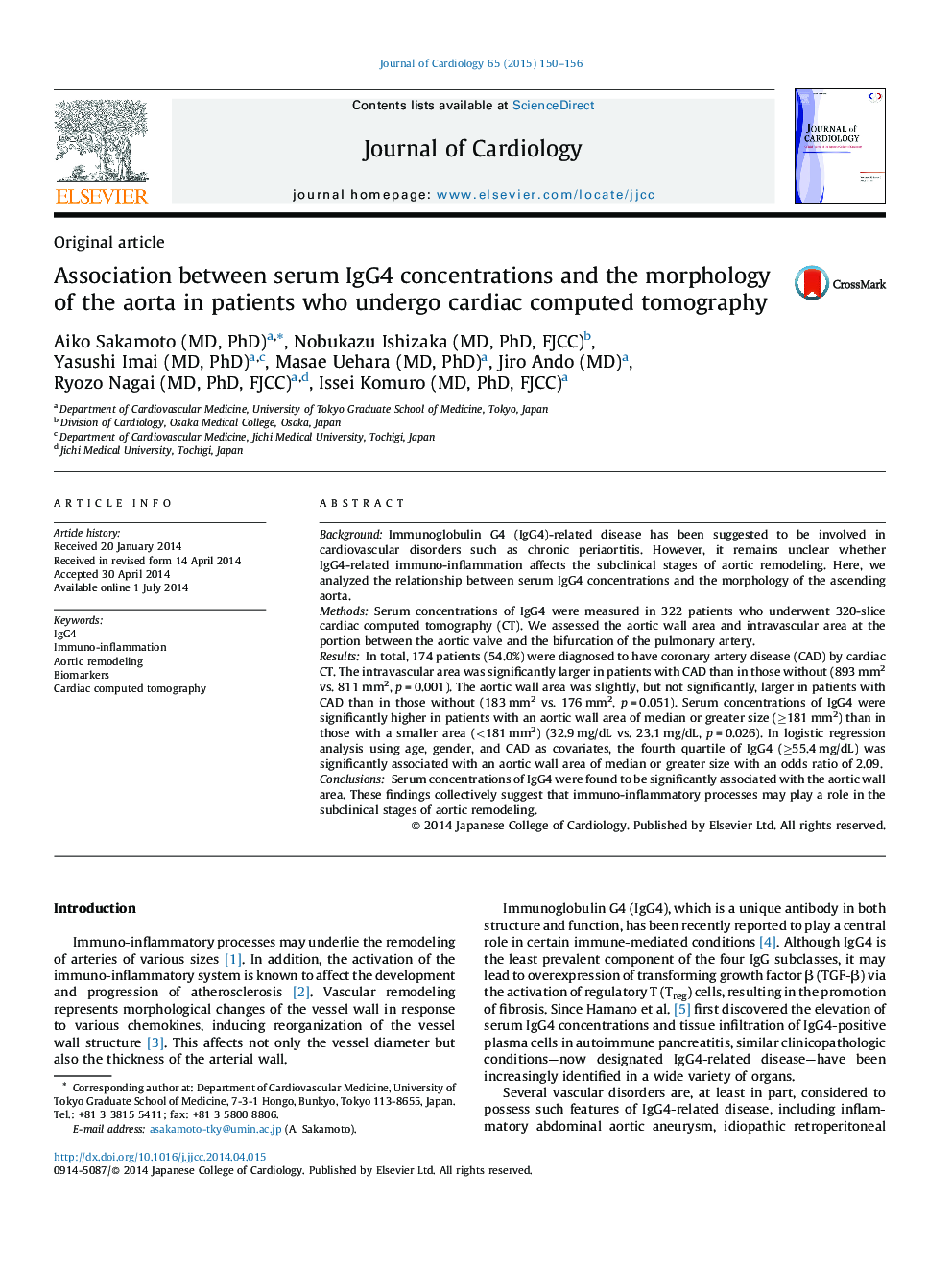| Article ID | Journal | Published Year | Pages | File Type |
|---|---|---|---|---|
| 5983994 | Journal of Cardiology | 2015 | 7 Pages |
BackgroundImmunoglobulin G4 (IgG4)-related disease has been suggested to be involved in cardiovascular disorders such as chronic periaortitis. However, it remains unclear whether IgG4-related immuno-inflammation affects the subclinical stages of aortic remodeling. Here, we analyzed the relationship between serum IgG4 concentrations and the morphology of the ascending aorta.MethodsSerum concentrations of IgG4 were measured in 322 patients who underwent 320-slice cardiac computed tomography (CT). We assessed the aortic wall area and intravascular area at the portion between the aortic valve and the bifurcation of the pulmonary artery.ResultsIn total, 174 patients (54.0%) were diagnosed to have coronary artery disease (CAD) by cardiac CT. The intravascular area was significantly larger in patients with CAD than in those without (893 mm2 vs. 811 mm2, p = 0.001). The aortic wall area was slightly, but not significantly, larger in patients with CAD than in those without (183 mm2 vs. 176 mm2, p = 0.051). Serum concentrations of IgG4 were significantly higher in patients with an aortic wall area of median or greater size (â¥181 mm2) than in those with a smaller area (<181 mm2) (32.9 mg/dL vs. 23.1 mg/dL, p = 0.026). In logistic regression analysis using age, gender, and CAD as covariates, the fourth quartile of IgG4 (â¥55.4 mg/dL) was significantly associated with an aortic wall area of median or greater size with an odds ratio of 2.09.ConclusionsSerum concentrations of IgG4 were found to be significantly associated with the aortic wall area. These findings collectively suggest that immuno-inflammatory processes may play a role in the subclinical stages of aortic remodeling.
